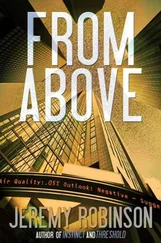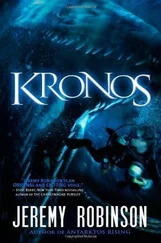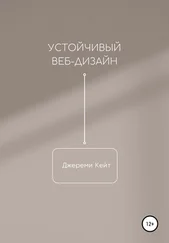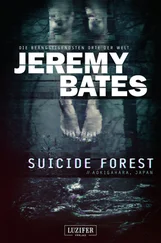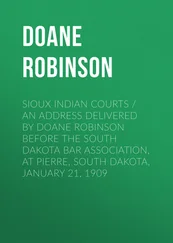“I’m starting to think a missile or two might not be a bad idea,” Wallman said, his lips twisted in a deep frown.
The 747 couldn’t be maneuvered like a fighter jet. Avoiding a constant stream of fire from the Raptor would be impossible. Miller pictured the jet looping around for another run, this time from behind. Unseen. They didn’t stand a chance.
Or did they?
Miller unbuckled and stood between the two pilots, gripping their headrests to stay balanced. “Keep us steady,” he said.
Matherson started to protest, but Miller spoke over him. “Is there a way to contact the KC-10 without the Raptor hearing us?”
“KC-10,” Wallman said. “Initiate communication protocol Whisper Seven.” He changed the channel and waited. “It’s a predetermined emergency channel for all aircraft that come in contact with Air Force One. He’ll have to look up the right frequency.”
“Won’t the Raptor know it, too?”
“Escorts have a separate emergency channel,” Wallman said. “And it’s a single-pilot plane. He wouldn’t be able to look it up even if he had the option.”
The radio crackled. “We’re here,” the KC-10 pilot said.
Miller took the transmitter and spoke to the pilot of the KC-10. “KC-10, are you able to purge the fuel you’re carrying?”
“Yeah, but—”
“Position yourself just in front of and below us. When I tell you to, purge all the fuel.”
“What!” The KC-10 pilot sounded like he’d just been told he had a second head growing out of his ass. “Who is this?”
“Just do it! We don’t have much time.”
Miller could see Wallman nodding slightly as he understood the plan. The man lifted the protective plastic cover from a button labeled FLARES.
Wallman took the transmitter. “This is Colonel Keith Wallman. Do what he said.”
The KC-10 dropped down and flew in front of them for a moment. The 747 shook in the wake of the giant fuel plane. Then the KC-10 was below them.
“Get us closer,” Miller said.
Matherson throttled forward until they were just fifty feet back from and above the other plane. If they flew through a batch of rough turbulence, which could drop a plane one hundred feet in just seconds, a collision might be hard to avoid.
Miller’s gut told him the Raptor would be behind them now. Approaching fast. “Keep us steady… steady…” He took the transmitter. “Start dumping the fuel.”
A billowing cloud of fuel shot from the back of the KC-10. Thousands of gallons of highly combustible fuel.
A loud metallic ticking came from the back of the 747. They were taking fire.
The Raptor was right behind them.
“Now!” Miller shouted at Wallman, and then in the transmitter, “Stop the purge!”
Wallman pressed the flare button, unleashing twin cascades of super-hot flares designed to defend against heat-seeking missiles. Instead, they became a fuse.
The air behind the two planes exploded like napalm, enveloping the F-22 and its pilot.
Matherson veered the 747 away from the KC-10 as the shock wave hit both planes and shook them violently. A second explosion marked the destruction of the Raptor.
The 747 leveled out. The KC-10 flew ahead and to the right. Both planes had survived the explosion. All three men relaxed. Miller gave both pilots pats on their shoulders. “How’s that for a countermeasure?”
“We’ll call it the BAE,” Matherson said. Sweat covered his forehead, but he was all smiles.
Miller figured out the acronym—big ass explosion—and laughed. “Good flying, gentlemen,” he said before leaving the cockpit to check on Adler and Brodeur. He felt the same elation as the two pilots—they’d survived an impossible situation—but he doubted the two men would be smiling if they knew he was the one and only countermeasure standing in the way of the Fourth Reich.
His smile faded as soon as he left the cockpit.
The ground crew at Strachowice Airport had been nervous about receiving Air Force One. The small regional airport featured just one terminal and had little in terms of security. They were ill-prepared to handle the sudden arrival of the U.S. president, and voiced their concerns several times over the radio when Wallman requested permission to land. When he explained that they’d been attacked and had two engines out, leaving out the fact that the president wasn’t actually on board, permission came quickly. The runway was short for a 747, but Wallman and Matherson handled it with ease. Even with two engines out, they managed to land the plane more smoothly than the three passengers had experienced on a plane.
The forty-minute drive from the airport to Ludwikowice Kłodzkie felt like a roller-coaster ride in comparison. Miller, Brodeur, and Adler had squeezed into a small red Opel Corsa—a two-door hatchback with a whopping ninety horses under the hood. But the small size was only half the problem. Adler, feeling at home on the curvy European country roads, pushed the vehicle to ninety miles per hour every chance she got.
“Just happy to be alive,” she said.
“Well, let’s try to stay alive for a bit longer,” Miller replied, but she had got them to the small village quickly. The terra-cotta-colored roofs and stark white walls of Ludwikowice Kłodzkie’s homes and buildings, glowing in the late-morning sun, came into view after only thirty-five minutes.
Adler slowed as they entered the town on Route 381. The majority of the village was situated around the road, which cut through the center of a valley. Green slopes and patches of forest completed the image of a picturesque European village that most would see as a perfect getaway, but Miller knew it hid dark secrets of the not-too-distant past. Still, the cool breeze and pleasing scent of fresh-cut hay did a lot to ease his nerves.
They pulled into a small roadside shop. Adler put the car in park, took a deep breath, and let it out with a smile. “I love this area,” she said.
Miller and Brodeur looked far less thrilled.
“Just get me out of this rodeo car and let me stretch,” Brodeur said.
Miller opened his door and tilted the front seat forward so Brodeur could get out.
Adler rounded the car and headed for the shop. “I’ll see if I can get directions to the henge.”
Brodeur climbed out of the car, removed his suit jacket, and stretched with a grunt, first touching his toes and then leaning side to side. An old woman with wrinkled jowls and cold blue eyes rode past on a bicycle. A basket on the front held several jars of pickles. Brodeur gave a wave and said, “Howdy,” but the woman just kept on riding.
“Well, she’s a grumpy old gal,” Brodeur said.
“You look like a Mormon warming up for a round of door-to-door evangelizing,” Miller said. “She was probably worried about you taking her bike.”
Before Brodeur could come up with a comeback, Adler exited the shop. “We just missed it.”
Miller stood by the tilted seat and swept his hands toward the backseat, motioning for Brodeur to enter. “Your chariot awaits.”
“I’m starting to hate you,” Brodeur said, but quickly entered.
Adler spun the tires as she turned the car around and went back the way they came. After just three hundred feet, she made a hard left turn and sped up a small, roughly paved road. The street, lined with a mix of oak and pine trees, reminded Miller of their brief visit to the New Hampshire lake house. His discussion with Huber already felt like a lifetime ago.
They passed beneath a tall railroad bridge and watched as another mile of unremarkable terrain went by, along with a few nondescript, but large buildings. Then, the road on the right cleared and the ruins of a massive building came into view. The building was long and tall, and clearly not that old, but looked as worn as the Roman Colosseum. The only sign of recent use was phallic graffiti covering several of the walls. The images were impossible to miss, but no one remarked on them. They were close and eager to find the henge, and hopefully Milos Vesely along with it.
Читать дальше



